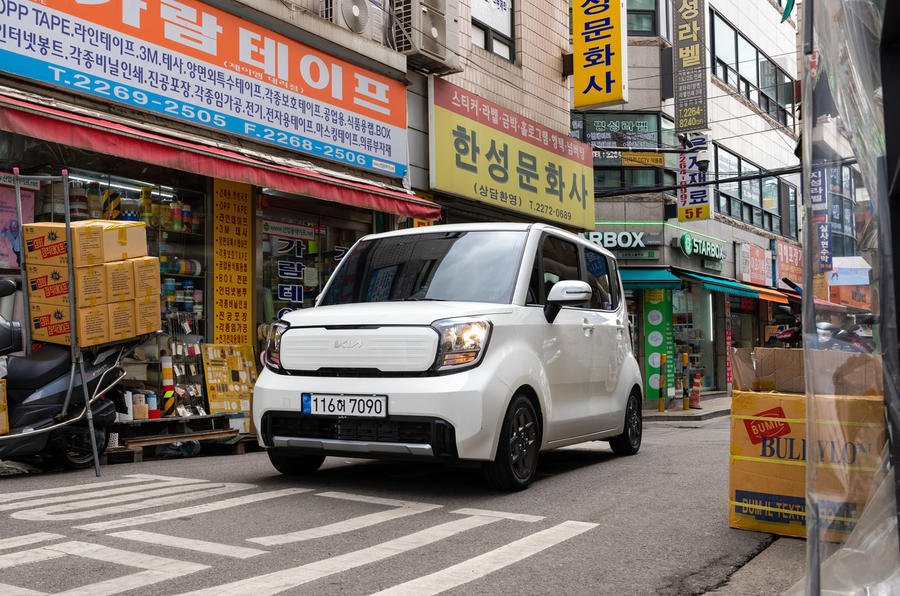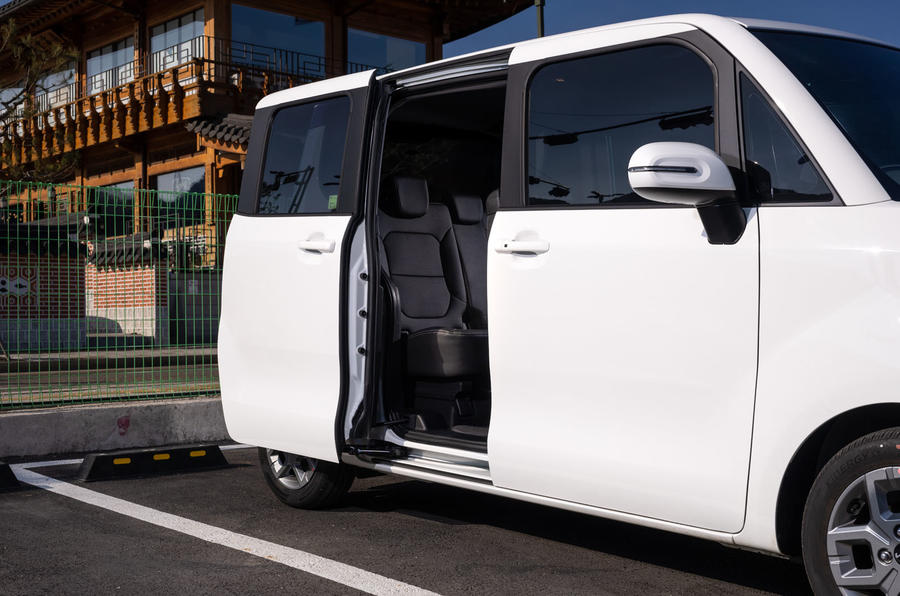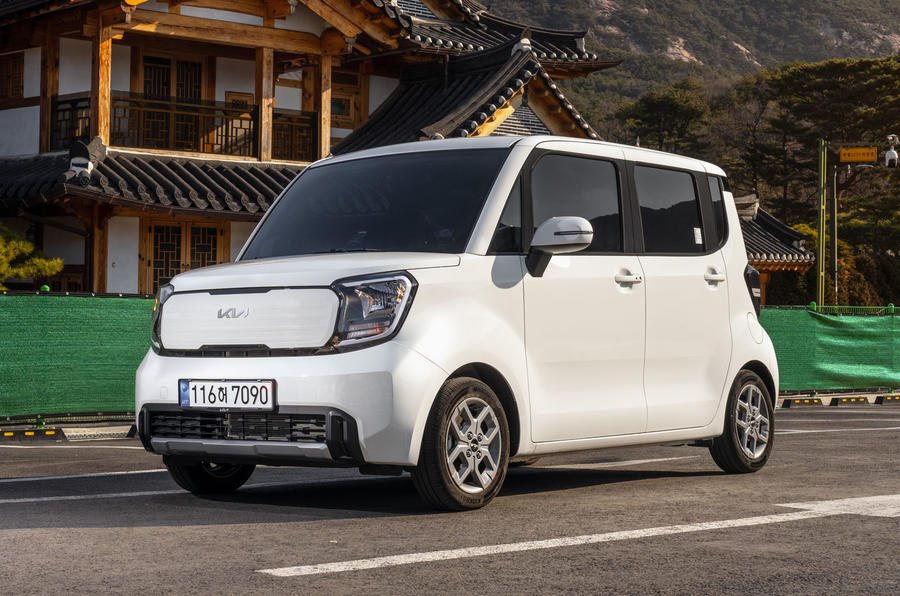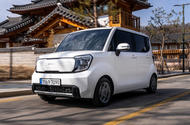This adorable, pint-sized petrol MPV could be exactly the sort of city car Europe needs
Easy to forget, perhaps, that there was a time – not so long ago – that Kia was a name intrinsically associated with no-frills affordable mobility, and not long before that it was a name almost entirely unheard of outside of its home market.
That’s an image that’s been well and truly erased in Europe by a slew of competitively specified and handsomely styled mass-market models like the latest Kia Sorento and Kia EV6, but back in its homeland, Kia is still well represented in the affordable car sphere by the hordes of Ray mini-MPVs that buzz nimbly around the wheels of buses and behemoth SUVs as they navigate the streets of Seoul – one of the world’s most congested cities.
There’s an electric version (Kia’s first EV, don’cha know?) with a just-about-useful 86 miles of range and decent charging stats on offer, but it’s roundly outnumbered on the streets of Korea’s capital by the much more conventional petrol car, which caters – to great effect – to the portion of city drivers who haven’t yet switched to a BMW M5 Competition, Genesis GV80 or Hyundai Grandeur. Seriously, this is a wondrously diverse car parc.
Priced from the equivalent of £8620, it measures 3595mm long by 1595mm wide and 1700mm tall, so it has a similar footprint to the closely related Kia Picanto but is taller than a Range Rover Evoque, which – together with a flat cabin floor and tightly packaged drivetrain – means it is tangibly more capacious inside. We’ll refrain from using the T-word, but a car of this size has no right to feel so roomy and open. Fair enough, the boot is pretty tight, but all four passengers get plenty of head and knee room, and there’s enough adjustability in the driver’s seat and steering wheel to suggest a longer journey wouldn’t be out of bounds. Plus, its boxy stature and upright seating position mean visibility is about as good as it gets, and parking is a cinch.

So too is the Ray’s equipment list more generous than European buyers in this segment may have come to expect: electric windows all round, a touchscreen (albeit a fairly rudimentary one), climate control and about as much ADAS as you’d want – a city motorist could ask for little more. The phone holder in place of smartphone mirroring functionality or a sat-nav is a giveaway to its bargain-basement billing, but hey, it worked for the Volkswagen Up and it works very well for Dacia. Most phones are as big as dashboard screens now, anyway.
What the Ray markedly isn’t is ‘nippy’, ‘fizzy’, ‘grunty’ or any of those other adjectives we tend to reserve for low-powered econoboxes such as this. Not by any stretch of the imagination. The naturally aspirated 1.0-litre four-cylinder petrol unit deployed here is familiar from the entry-level UK-spec Picanto (albeit in a different state of tune), and even that car – smaller and lighter as it is – is among the slowest on sale today. Experienced here, with roughly 70kg of added bulk to shift along and running through a faintly agricultural automatic gearbox, this is an engine clearly at its best in an environment where it will rarely be called on to exceed 30mph.
Not that it’s an unrefined unit: quiet on start-up and commendably eager to pull away, the Ray happily keeps pace with the army of enthusiastically driven saloons and sports cars that dominate Seoul’s centre (difficult not to, when every main road is a car park), and – though the under-ratioed gearbox rarely has another cog to offer up on kickdown – stops some way short of deafening when under high load. It’s not particularly frugal, mind – Kia quotes a downtown consumption figure of 28.7mpg, which makes the Ray a good deal more thirsty than anything this small with a blown triple.
Kia doesn’t list an official 0-62mph time for the Ray – though we’re assured it will get there eventually – which probably is the clearest reflection of its positioning. This is a car that, were you to own one in London, could effectively be geo-restricted from ever leaving the bounds of the M25, such is its focus on low-speed manoeuvrability and short-distance comfort.

Efficiency and performance gripes aside, the biggest frustration is that the Ray shows just how much is possible in such a small footprint; just as Japan’s kei cars have long sought to offer big-car practicality in bubble-car footprints, so too has the Ray been carefully conceived to make the most of every last available square inch of floorpan and glasshouse. For a car that occupies not much more road than the lovable-but-impractical Citroën Ami, it’s remarkable that it can convey four adults – and their associated gubbins – calmly and comfortably through one of the world’s most congested cities.
The ride is agreeably composed, the steering is tight and predictable (if almost completely numb), the seats are comfortable and the in-car tech and build quality are more than adequate for the price. Plus, because it looks so harmless and jovial, you’d struggle to incite road rage from fellow road users even with the most blinding of metropolitan motoring gaffes. (I should know, having had to ease myself into the front of an obscenely long queue at a junction, having chosen a wrong lane, and received a cheery wave from the taxi driver behind.) And the right-hand-side rear door slides, which makes entry and egress easier while also allowing drivers to park closer to other cars, walls, lamp-posts and the like.
So why frustrating? Because cleverly conceived urban mobility solutions such as this are few and far between over in our neck of the woods, where they are needed more than ever before. The cheapest new car (and I mean car) on sale in the UK is 500mm longer than this (but scarcely more roomy and practical), and the cost of producing electric cars at the moment means we’re unlikely to see an EV that’s remotely this compact or affordable for a while.
The chances of Kia exporting the petrol Ray are at about the one-legged ballerina level, and converting the EV variant to right-hand drive – then shipping it – would be a loss-making exploit for the Korean giant, which would understandably much rather keep launching more profitable, full-sized EVs and selling them in astronomical numbers worldwide.
All of which is to say that we’d do well to lament the Ray’s absence from the UK market just as much we do sporting heroes like the Toyota GR Corolla and Subaru WRX. Save perhaps the odd airport run, there is no journey within the city walls this boxy supermini could not complete admirably. Hell, how many Ubers routinely carry more than two people and a load of luggage? Far better to have 10,000 of these zipping around a European city than a load of lardy MPVs, surely. In a world where the smallest Mini measures 3800mm long and a Fiat 500 EV pushes north of £30,000, genuine low-frills urban runarounds such as this have started to hold extra-special appeal.

Source: Autocar
